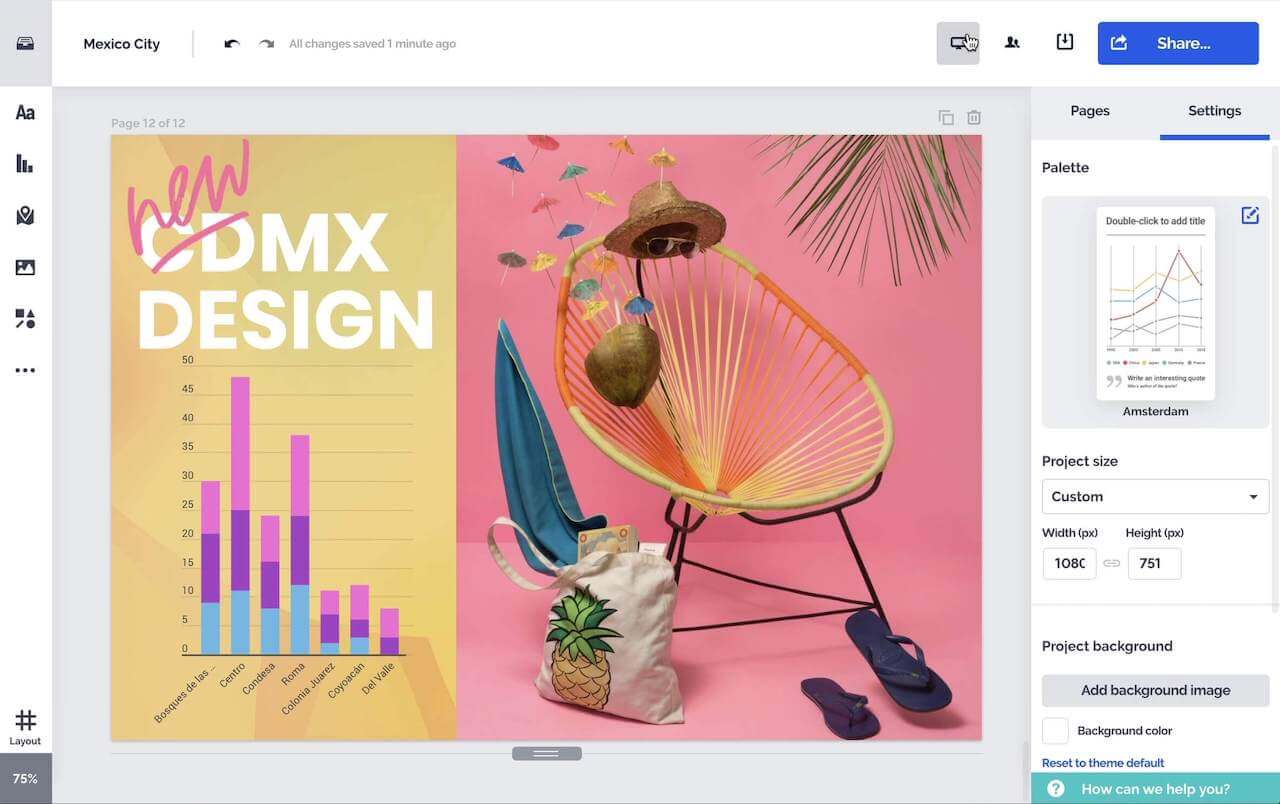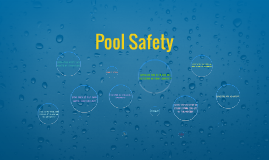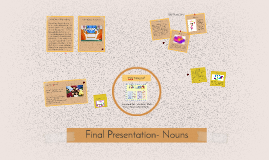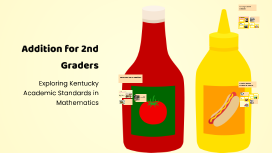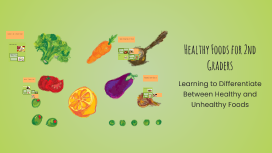Healthy Foods for 2nd Graders
Transcript: Introduction to Healthy Foods Identifying Healthy Foods What are Healthy Foods? Healthy foods are those that are rich in nutrients, vitamins, and minerals. They include fruits, vegetables, whole grains, and lean proteins that support overall health and well-being. Fruits and Vegetables Whole Grains Fruits and vegetables are packed with vitamins, minerals, and fiber. They help strengthen the immune system and lower the risk of diseases. Aim for a variety of colors to maximize nutrients. Whole grains contain all parts of the grain kernel, providing important nutrients like fiber, B vitamins, and antioxidants. They help in digestion and provide lasting energy. Lean Proteins Importance of Healthy Eating Dairy Options Healthy Foods for 2nd Graders Lean proteins like chicken, turkey, fish, beans, and nuts are important for muscle growth and repair. They are lower in saturated fats compared to red meat, making them healthier options. Dairy products such as milk, yogurt, and cheese provide calcium and vitamin D, essential for strong bones and teeth. Low-fat and fat-free options are healthier choices for kids. Healthy eating is important for growth and development in children. It boosts energy, improves mood, and supports learning in school. Making healthy choices also sets the foundation for lifelong habits. Making Healthy Choices Identifying Unhealthy Foods Sugary Snacks Sugary snacks, such as candies and cookies, contain high levels of sugar and provide little nutritional value. Consuming these often can lead to health problems like obesity and cavities. Tips for Choosing Healthy Foods Choose foods with bright colors like fruits and vegetables, which are often packed with vitamins. Look for options that are low in added sugars and saturated fats, such as whole grain bread and lean meats. Fast Foods Processed Foods Fast foods, like hamburgers and fries, are often high in unhealthy fats, sugars, and calories. Eating these reqularly can contribute to weight gain and increase the risk of diseases. Processed foods, which include items like frozen meals and packaged snacks, are often loaded with preservatives and unhealthy ingredients. These foods can disrupt nutrition and overall health. Fun Healthy Recipes Learning to Differentiate Between Healthy and Unhealthy Foods Engaging in Healthy Habits Sugary Drinks Participate in regular physical activities such as biking or playing sports, paired with healthy eating. Healthy habits are not only about food but also staying active and getting enough sleep. Incorporate healthy ingredients into fun recipes like fruit smoothies or veggie wraps. Meal preparation can become enjoyable, fostering a love for cooking and healthy eating. Sugary drinks, such as sodas and fruit punches, contain high levels of sugar and little to no nutritional value. They can lead to weight gain and dental problems among children.





